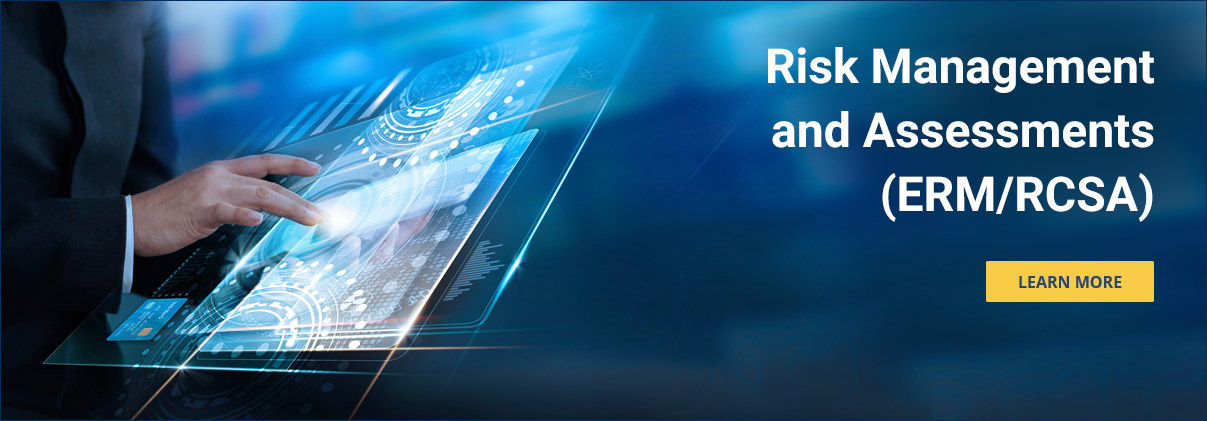RCSA (Risk Control Self-Assessment) reports are crucial for effectively managing and mitigating risks across the company, but they are frequently challenging to conduct and report on. Each business unit must produce self-assessment reports and send them to risk managers, who often integrate the multiple evaluations to report on enterprise risk.

The self-assessments are meant to provide businesses insights and warnings about the risk framework. Financial institutions need to be extra-vigilant when it comes to risks throughout the enterprise because they work in a heavily regulated industry. However, not all businesses are satisfied with the insights they are able to mine from RCSA reports. There are many inefficiencies that are present in manual RCSA processes which limits their usability in enterprise risk management.
The Difficulties Associated with Manual RCSA Processes in Enterprise Risk Management
Each business unit compiles and delivers its RCSA report manually, in a document file or a spreadsheet. This results in several inefficiencies, including the following:
- Inconsistency in risk classification across business units
- Non-standardized taxonomy of control and risk
- Evaluations that are subjective versus objective
- Inefficient approach and duplication of controls
- Outdated information
.
Inconsistency In Risk Assessment Across Business Units
Because each business unit examines risks and controls about specific business lines, similar risks may be assessed and graded differently across business units. This is true for both inherent and residual risks.
Taxonomy Of Control and Risk That Is Not Standardized
Different business units may use terms to describe the same risks and controls. This can result in report overlap and confusion during the evaluation and consolidation of the reports into an enterprise risk report. The risk manager must subjectively interpret the ratings or seek clarification from other business units, which adds time and effort to the process.
Numerous benefits can be realized by automating the RCSA process procedure. It is critical to grasp what automation of RCSA entails in this context. Click To TweetEvaluations That Are Subjective Versus Objective
Risk assessments are subjective, as each business unit manager usually handles them. Without a consistent set of evaluation criteria, business units must either analyze assigned risks independently or agree on how to evaluate risks and controls collectively.
Duplicate Controls
Decentralized methods to RCSA data – delivering distinct segments of spreadsheets and Word documents to different business units – result in unorganized data and more effort. Additionally, it may result in redundant controls, action, and potential inaccuracy.
Data That Is No Longer Current
When business unit reports are evaluated and consolidated, the data is frequently outdated. Without a real-time data-driven approach to RCSA processes and reporting, risk and compliance stakeholders can only review and advise on historical data, not new issues.
The Advantages of RCSA Automation for Risk Management in The Organization
Numerous benefits can be realized by automating the RCSA process procedure. It is critical to grasp what automation of RCSA entails in this context. Risk assessment cannot be automated; risk managers must evaluate risks based on various factors and determine their severity. That is the benefit of automating the RCSA process — it frees up risk managers’ time and results in improved evaluations. The following are some of the benefits of implementing an RCSA solution:
- A standardized risk taxonomy and risk assessment system
- A common control library
- Automatic report gathering and collation
- Management of tasks
Standardized Risk Taxonomy and Risk Ratings
An RCSA system incorporates a centralized risk and control taxonomy accessible to the entire business. Rather than each business unit defining its risks and controls, each risk is specified centrally and stored in a database. If another business unit is likewise exposed to the same risk, they can choose it from the database. This means that all products related to a particular risk can be viewed in a unique location. Additionally, risk ratings are communicated between business divisions.
Control Library That Is Shared
Additionally, RCSA solutions share a control library. This enables management to monitor the performance of individual controls across several business units and to diagnose any process-related issues that may be creating inefficiencies.
Reports Are Collected and Collated Automatically
Because risk and control taxonomies have been standardized, the RCSA system can easily combine reports, compile data, and analyze it for corporate risk management. Because all risks and controls are linked, management can readily understand how each risk affects various business units, how different business units manage risks, how rules are shared throughout departments, and a variety of additional insights. Additionally, the RCSA system aggregates risk ratings across departments and delivers enterprise-wide risk assessments.
Management of Tasks
Additionally, modern RCSA systems include capabilities that enable management to manage risks efficiently. Managers may effortlessly and rapidly assign action items to risks and controls directly from the RCSA panel, helping mitigate risks across the enterprise.
Interested in seeing how your organization can get more out of RCSA reports and make them an integral part of your risk framework? Get in touch with our experts for a demo of Predict360, the American Bankers Association endorsed solution for risk and compliance management.
